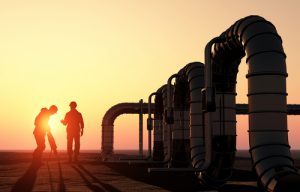 High safety standards in construction don’t just protect building occupants, they also help protect the natural environment around us. The “Safe Pipes” Act, developed to protect the Great Lakes from fuel spills, is a good example of this.
High safety standards in construction don’t just protect building occupants, they also help protect the natural environment around us. The “Safe Pipes” Act, developed to protect the Great Lakes from fuel spills, is a good example of this.
Improved Planning for Pipeline Safety
This summer, President Obama signed the Protecting our Infrastructure of Pipelines and Enhancing Safety Act of 2016, or PIPES Act, into law.
This act will keep the Pipeline and Hazardous Materials Safety Administration’s (PHMSA) for oil and gas transportation safety working through 2019, while also expanding the administration’s duties.
The act has given the Great Lakes the designation of “unusually sensitive area,” so that transportation of hazardous materials in the area will be subject to higher safety standards. In addition, the Secretary of Transportation, who heads the PHMSA, will now have the power to issue emergency orders for management of the pipelines in the event of an incident that suggests a threat to public health or the environment.
The PHMSA will also be required to develop regulations for the safe construction and operation of underground facilities that store natural gas.
Aging pipes and related equipment were also taken into account. The act requires the Government Accountability Office, an independent, nonpartisan watchdog agency, to review and report on risks related to the pipelines’ age and condition.
Addressing Current Threats
As production of natural gas has grown throughout the country, so too have the problems related to transporting it. Canadian Energy firm Enbridge’s “Line 5” in particular has raised concerns. This decades-old line now carries thousands of barrels of crude oil, as well as natural gas, though the ecologically sensitive Straits of Mackinac daily.
Due to the large amount of water that flows through the Straits of Mackinac, a gas or oil spill here could have disastrous consequences for the Great Lakes and surrounding towns.
Provisions in the “Safe Pipes” act were designed to prevent potential disasters like this and mitigate the effects of any accident that does occur.
To keep up-to-date on safety standards in construction, contact us at Construction Monitor.
